 Concept designs are more than mere fantasy or idle musing – they drive real technological change, keeping us here-and-now humans looking ahead toward a never-certain future.
Concept designs are more than mere fantasy or idle musing – they drive real technological change, keeping us here-and-now humans looking ahead toward a never-certain future.
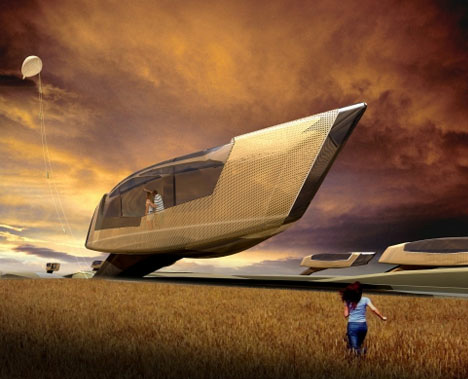
Many concepts are already in the works: cars that plug into rather than park next to homes, mobile pods for off-the-grid living and three-dimensionally-complex objects that only a few years ago were hard to model on a computer, let alone construct in real life.
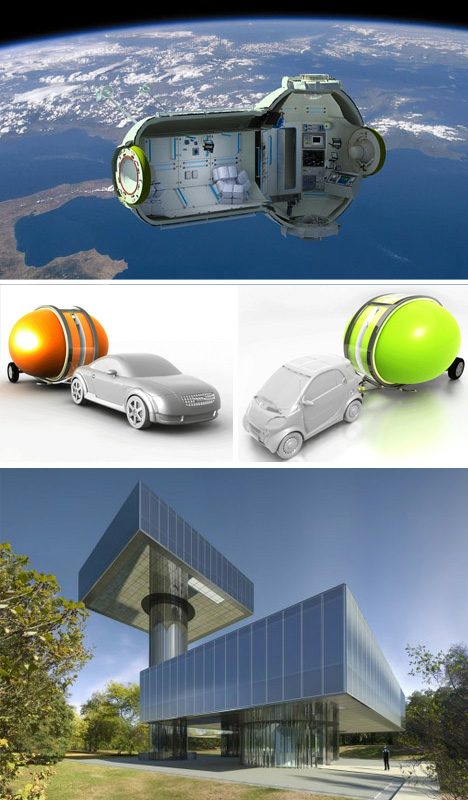
From aquatic towns to orbital hotels, the above articles cover unbuilt wonders that test the limits of curry technology but also provide something for the future to look back on as a benchmark. It is always hard to say whether they will seem dated or visionary ahead of time.
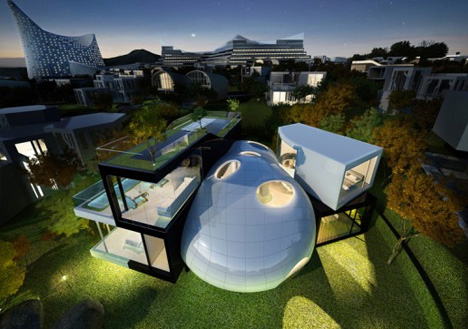
It starts with a fluid central volume with operable circular windows and skylights for seasonal weather-based temperature flexibility, then spawns a series of additional indoor and outdoor spaces.
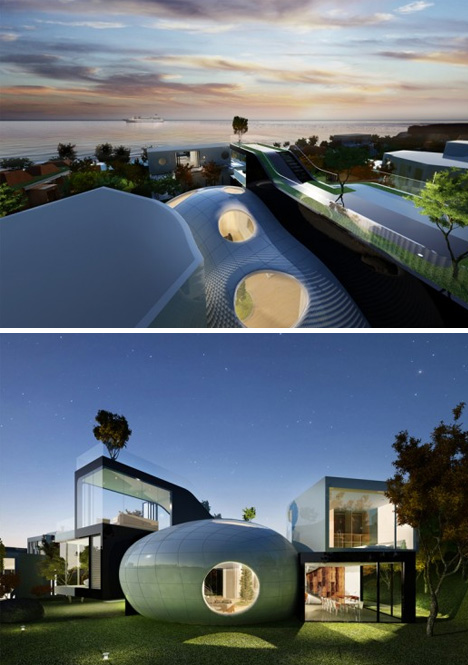
Scheduled to be constructed on the coast of South Korea by 2015, Planning Korea let each sub-structure reflect its function with respect to the whole, including party rooms, work spaces, bedrooms and lounges that jut out at angles in each direction.
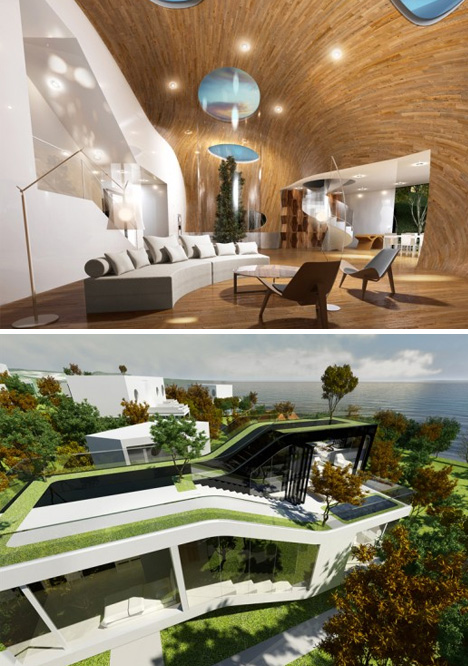
A green roof also varies in height, rising toward one end of the site and sinking into a swimming pool with a view toward the ocean, reinforcing a sense of motion and creating additional views at various points along the way.
NURBan Design: Extreme Curved-in-3D Home Construction

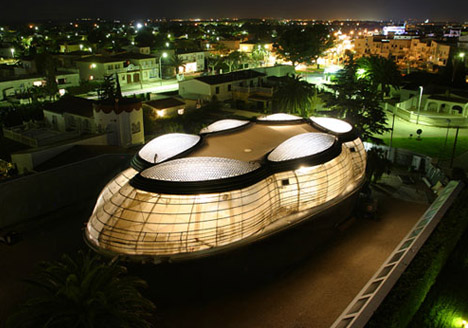
With the shape of a spaceship, scaled skin of some giant serpent and amazing futuristic forms that defy easy description, this home seems like some kind of science-fiction vision or creative artist rendering … but represents a reality architects have dreamed of for decades – a whole house of NURBS.
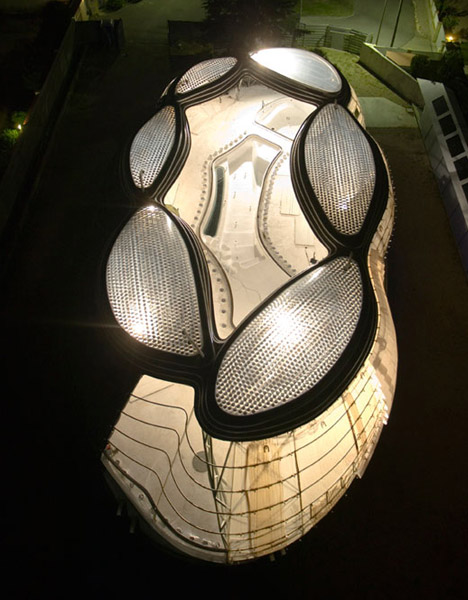
“Non-uniform rational basis spline (NURBS) is a mathematical model commonly used in computer graphics for generating and representing curves and surfaces which offers great flexibility and precision for handling both analytic and freeform shapes.” In short: they are a way to create incredible irregular shapes that are often nearly impossible to construct in the real world … until now.
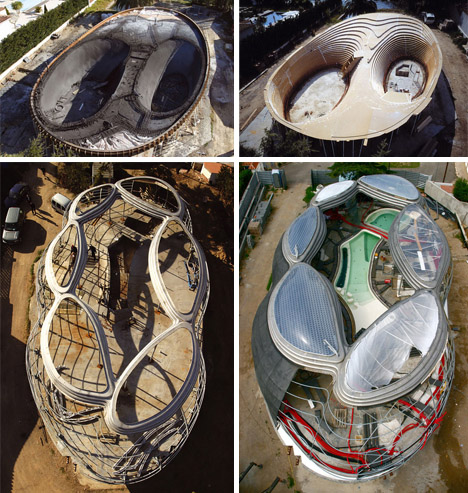
Increasingly complex computer programs and precise laser-cutting techniques have turned even the most irregular, unusual and unique shapes into potentially buildable structures like this amazing new home designed by architect Enric Ruiz-Geli.
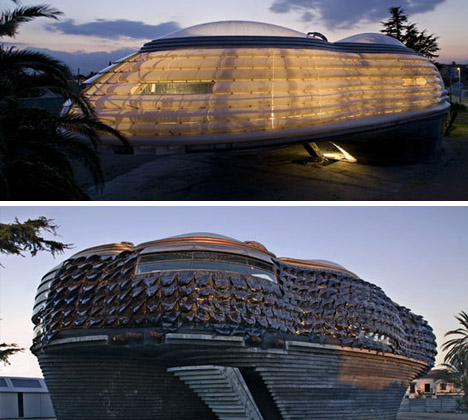
The so called ‘Villa Nurbs’ is a tribute to the amazing potential of these innovative technologies and even looks (at least at first glance or in the distance) like something too perfect, too smooth and too space-age to possibly be a real building.
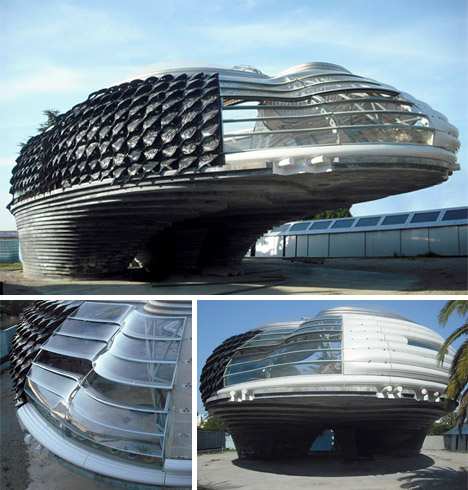
Architects have been creating models of this kind for a long time and many are still beyond the capacity of construction companies and building groups, but more and more high-profile designers are pushing the limits like this and some engineering and manufacturing firms are catching up quickly.
See more At Doornob
Speak Your Mind